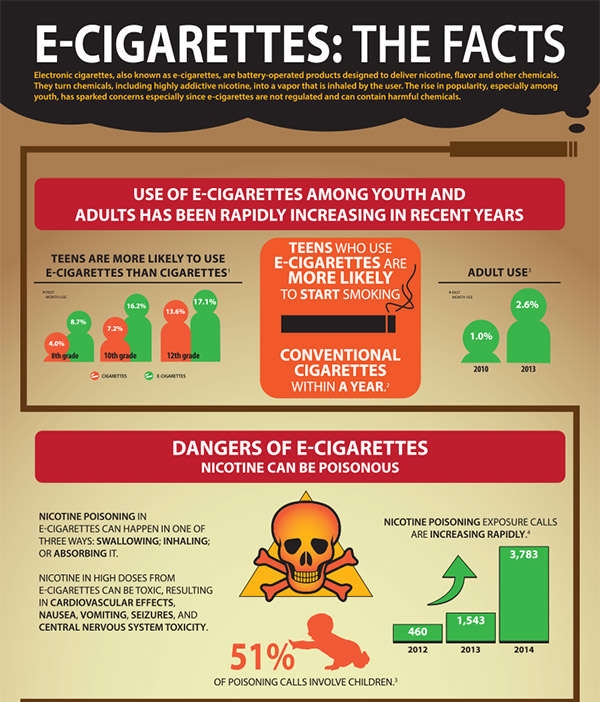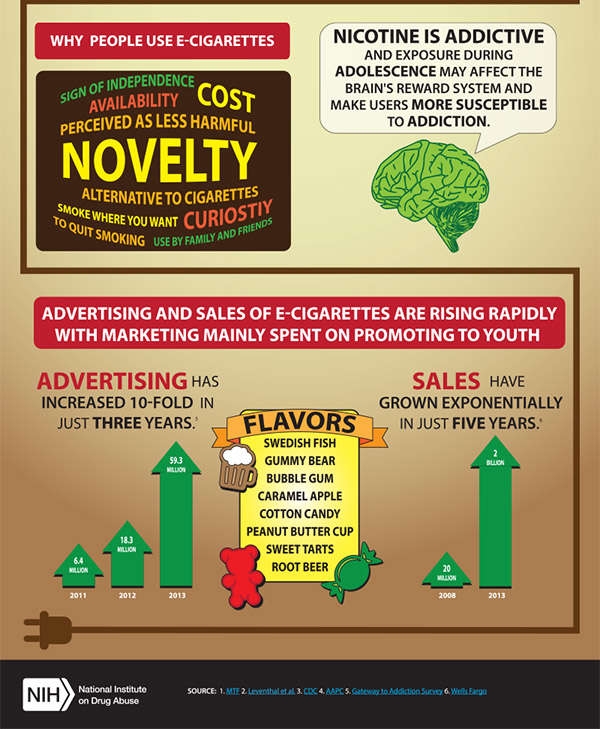Electronic cigarettes, also known as e-cigarettes, are battery-operated products designed to deliver nicotine, flavor and other chemicals.
Text Description of Infographic
First Section, Left Graph: Use of e-cigarettes among youth and adults has been rapidly increasing in recent years. Teens are more likely to use e-cigarettes than cigarettes. E-cigarette and cigarette use in the past month is shown on the bar chart. Four percent of 8th graders, 7.2% of 10th graders and 13.6% of 12th graders used e-cigarettes compared to 8.7% of 8th graders, 16.2% of 10th graders and 17.1% of 12th graders that used cigarettes.
First Section, Middle Graph: Teens who use e-cigarettes are more likely to start smoking conventional cigarettes within a year.
First Section, Right Graph: Adult e-cigarette use in the past month is shown on the bar chart. In 2010, 1.0% of adults used e-cigarettes compared to 2.6% in 2013.
Second Section, Right Graph: Nicotine poisoning exposure calls are increasing rapidly. Nicotine poisoning exposure calls are shown on the bar chart. In 2012, there were 460 calls, in 2013, there were 1,543 calls and in 2014, there were 3,783 calls.
Second Section, Bottom Graph: Fifty-one percent of poisoning calls involve children.
Fourth Section, Left graph: Advertising and Sales of e-cigarettes are rising rapidly with significant youth oriented marketing. Advertising has increased 10-fold in just three years. In 2011, 6.4 million, in 2012, 18.3 million and in 2013, 59.3 million was spent on e-cigarette advertising.
Fourth Section, Right graph: Sales have experienced exponential growth in just five years. In 2008, 20 million and in 2013, 2 billion in sales was generated from e-cigarettes.
References:
This publication is available for your use and may be reproduced in its entirety without permission from NIDA. Citation of the source is appreciated, using the following language: Source: National Institute on Drug Abuse; National Institutes of Health; U.S. Department of Health and Human Services.


